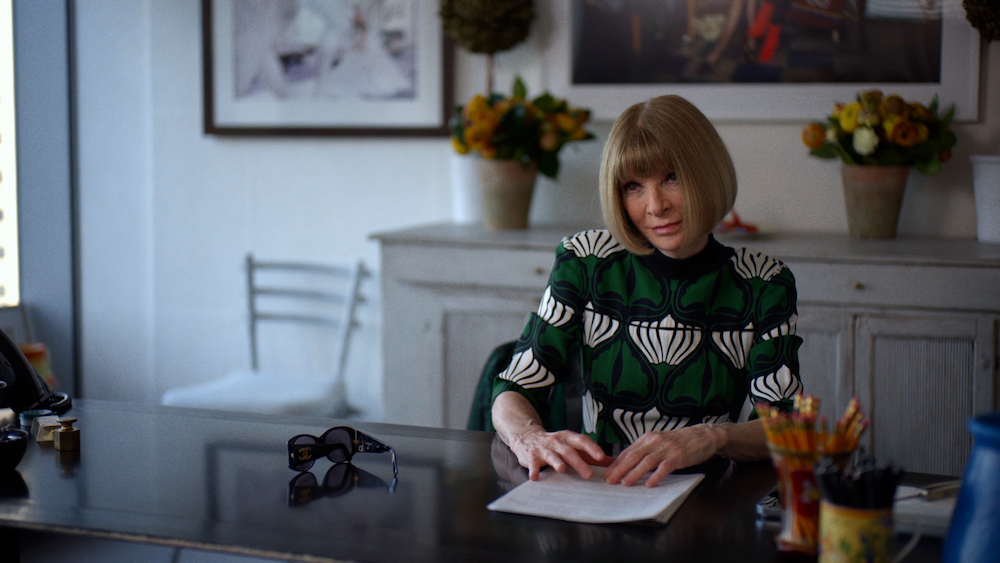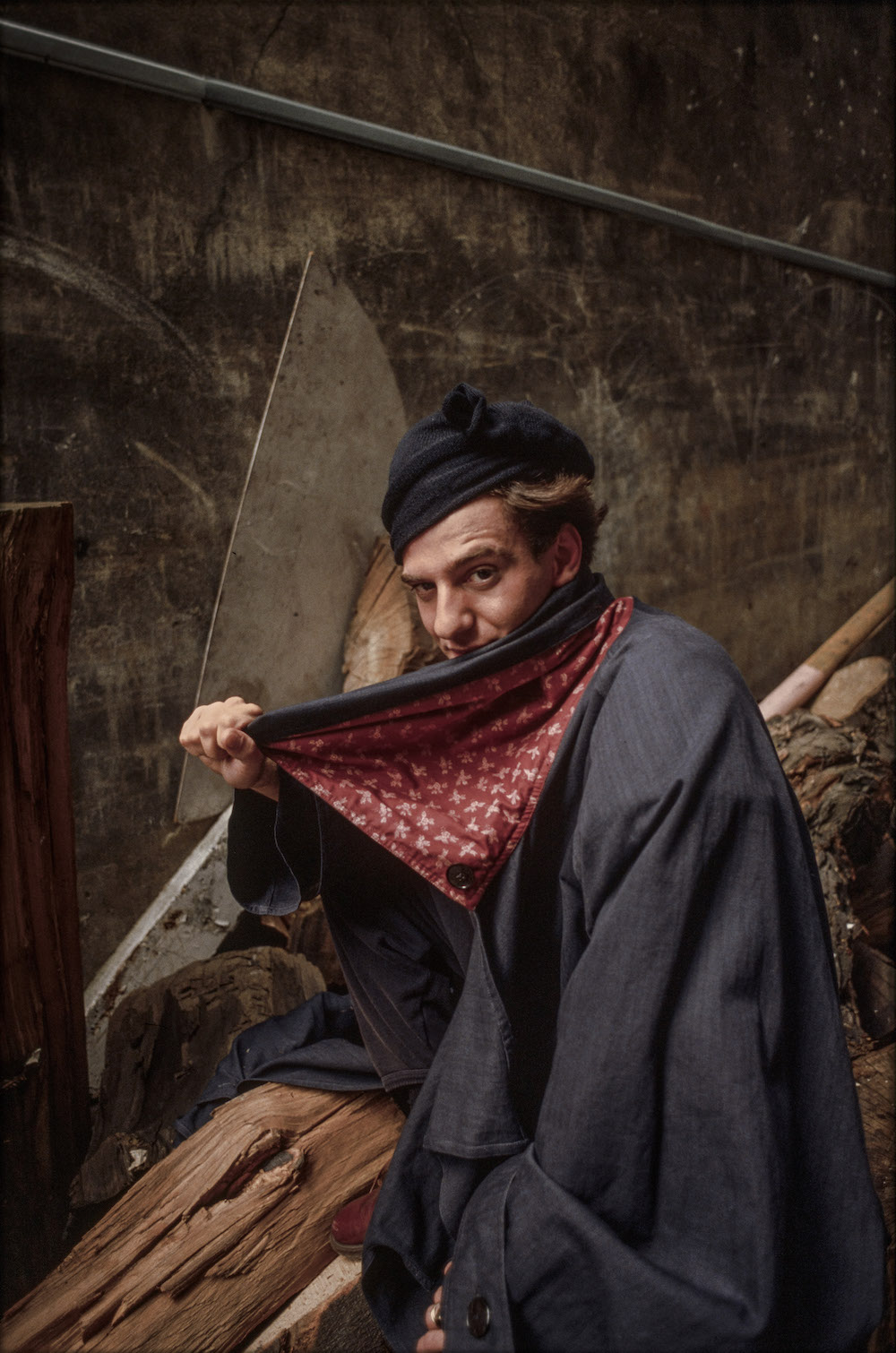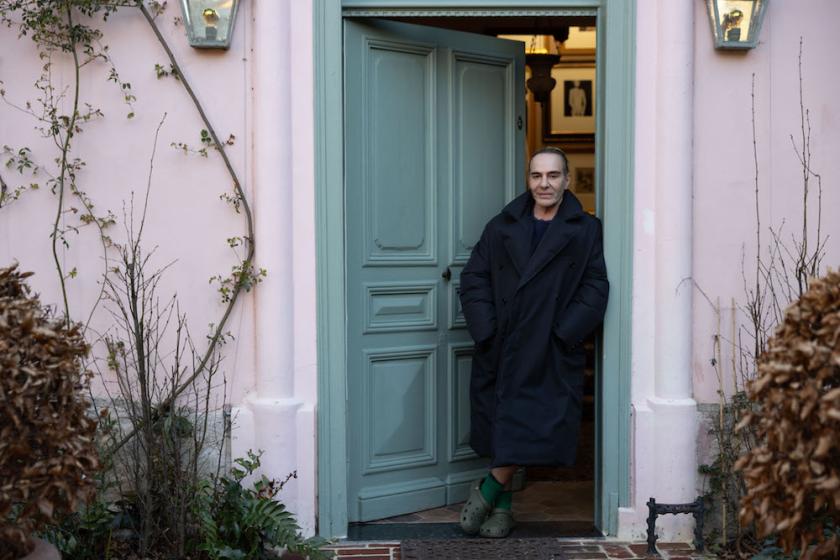“Fashion has a very short memory. Maybe that’s part of its charm,” says Robin Givhan of The Washington Post in Kevin Macdonald’s documentary. Whether anyone can forget John Galliano’s drunken anti-Semitic and racist outpourings at La Perle, his local café in the Marais in Paris in 2011, followed by his sacking by Dior, where he’d reigned as creative director for 14 years, is doubtful.
But will people, or rather the fashion world, forgive him? It seems, judging by the acclaim for his recent Maison Margiela show in Paris, a spectacular, strange event (lots of corsets and cinched waists - on the men) held under a bridge on the Seine, that they already have. The fact that he’s a white man may have something to do with it, adds Givhan.
High & Low, directed by Macdonald (Marley; Whitney; The Mauritanian) is fascinating, and a wonderful chance to see Galliano’s extraordinary creations, his extravagant ideas and his fluid bias-cut dresses. There’s rather too much footage of Abel Gance’s Napoleon, one of his favourite films and the inspiration for his St Martin’s degree show, Les Incroyables, which launched his brilliant career in 1984. The film is also inconclusive about Galliano’s deserving of a second chance, partly because he says he doesn’t know why he said what he did and can’t remember anything about it, being on a solitary black-out-drunk bender at the time. So not a lot of insight there.
He seems surprised when Macdonald tells him that there were three separate incidents of abuse at La Perle, not just one, which is odd for a man who’s spent the past 12 years or so trying to delve into his psyche and make amends, as well as studying Jewish history under a rabbi. “I’m going to tell you everything,” he says, but he doesn’t, or can’t.
 Macdonald set out to make a film about transgression, redemption and cancel culture. Galliano fit the bill and they were introduced through a mutual friend. The designer had no editorial control, says Macdonald, though it’s worth noting that Conde Nast Entertainment is an associate producer. Anna Wintour (pictured above) has been a champion of his, calling him a rare thing, a great designer, since his penniless days in the early 90s, before he was made creative director of Givenchy, and remains so, as does Kate Moss (he made her wedding dress during rehab), as well as Naomi Campbell (she hasn’t watched the La Perle video: “I don’t need to”) and other supermodels.
Macdonald set out to make a film about transgression, redemption and cancel culture. Galliano fit the bill and they were introduced through a mutual friend. The designer had no editorial control, says Macdonald, though it’s worth noting that Conde Nast Entertainment is an associate producer. Anna Wintour (pictured above) has been a champion of his, calling him a rare thing, a great designer, since his penniless days in the early 90s, before he was made creative director of Givenchy, and remains so, as does Kate Moss (he made her wedding dress during rehab), as well as Naomi Campbell (she hasn’t watched the La Perle video: “I don’t need to”) and other supermodels.
The documentary begins by recapping the La Perle incidents. It's a pathetic sight, this world-famous fashion designer, drinking alone, haranguing people. He said, “I love Hitler” and “Your mothers and your ancestors would all be gassed” to two women at the bar, and “fucking ugly Jewish bitch” and “fucking Asian bastard” to two others, one of whom, Philippe Vergitti, whose mental health has suffered since, is interviewed in the film. In the trial, Vergitti said he didn’t think Galliano was racist and anti-Semitic – “I felt bad for him” – but now he’s changed his mind and regrets it, partly because Galliano hasn’t apologised (he says he did, in court).
He was fined 6000 euros and found guilty of making “public insults”. A doctor said he was suffering from barbiturate poisoning, brought on by a diet of painkillers, Valium, sleeping pills and alcohol – enough to drive anyone over the edge. Though why that particular edge, you wonder. “It was a disgusting, foul thing that I did,” he says in his strong, rather theatrical voice.
How much blame can be directed at the fashion industry and its insatiable demands? Galliano was responsible for 32 collections a year, not just for Dior but his own label as well. Alexander McQueen hanged himself in 2010, paranoid and desperate from the pressure of being a global brand. The parallels are obvious.
Galliano’s sister had to beg him to go to his father’s funeral. The company laid on a private jet; he was back doing fittings a day later. His right-hand man Steven Robinson died of a cocaine overdose in 2007. “I believed he was an angel. He gave up everything of his personal life to the creations,” says Galliano. But it was a co-dependent relationship and Robinson was very controlling, forcing out Galliano’s muse, Amanda Harlech – “I was heartbroken”- when he went to Dior. After he died the excess got out of hand and the black-outs began. Without Robinson to fend off the outside world, he was lost inside the toxic bubble of fashion sycophancy. “I was committing suicide slowly,” he says.
Bernard Arnault, chairman of LVMH, and Jean Toledano, head of Dior, who say that sales increased by 5 per cent every six months under Galliano, told him that he had a problem and offered him six months off to go to rehab (he doesn’t remember the offer). “Do I have the body of an alcoholic?” he asked them, showing off his remarkably toned body. He was as obsessive about the gym as he was about everything else, including the pill bottles that had to be lined up on his bedside table.
 Galliano was born in Gibraltar in 1960. The family lived in Sefaty’s Passage, once known as Synagogue Lane – irony there - and moved to grey old Streatham when John was six. His father, a plumber, was strict, sometimes violent. Galliano knew he was gay from an early age and liked trying on his mother’s make-up in the bathroom, almost wanting to get caught and punished. He created another world in his head, where life was nicer. At St Martin’s things improved, though he was still living at home. “He was very suburban, into labels,” says David Harrison, a painter and early mentor. “Half a pint of lager and he’d be drunk. You’d have to look after him.”
Galliano was born in Gibraltar in 1960. The family lived in Sefaty’s Passage, once known as Synagogue Lane – irony there - and moved to grey old Streatham when John was six. His father, a plumber, was strict, sometimes violent. Galliano knew he was gay from an early age and liked trying on his mother’s make-up in the bathroom, almost wanting to get caught and punished. He created another world in his head, where life was nicer. At St Martin’s things improved, though he was still living at home. “He was very suburban, into labels,” says David Harrison, a painter and early mentor. “Half a pint of lager and he’d be drunk. You’d have to look after him.”
When he was a student, a stint as a dresser at the National Theatre taught him how clothes can bring out a character, how emotion lives within a fabric. He treats his models as actors and they love him for it. “We’re both of us shy and awkward,” says Kate Moss, “until we’ve had a drink.” There’s always a dramatic theme to his catwalk shows – another parallel with McQueen – usually involving escape, such as from Russia at the time of the Romanovs. Though themes can misfire, such as the infamous Clochards show in 2000, when people thought he was taking the piss out of the homeless. It didn’t occur to him that he might offend anybody. But, says one of the interviewees, “he only sees the surface of things”.
Rabbi Barry Marcus, who’s worked with him since 2011, says Galliano knew very little about the Holocaust (though enough, surely, to talk about gassing) and that “it wasn’t done with intent”. Abe Foxman, head of the Anti-Defamation League, is equally supportive. “It’s not who he is,” says Anna Wintour. It’s taken him seven years to apologise to Toledano, who is Jewish, though Galliano says his phone calls weren’t accepted. “I hope I’ll be given a second chance,” he says. “All of us are a little bit racist. There was a them and us in my childhood. We need to unlearn.” You’re left with the feeling that there’s learning as well as unlearning to be done. But fashion moves too fast for that.















Add comment